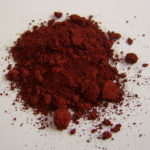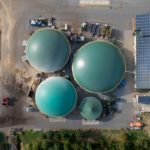Biogas is a renewable energy source produced by the anaerobic decomposition of organic matter. It can be used to generate electricity through turbines or gas power plants, as well as to produce heat in furnaces, boilers, stoves, or other gas combustion systems. Biogas is composed of methane (CH4) and carbon dioxide (CO2), but it also contains contaminants such as sulfur.
Table of Contents
ToggleDuring the production process, naturally occurring sulfur in organic matter is converted into hydrogen sulfide (H2S), a gas that is corrosive, toxic, and harmful to the environment.
To remove hydrogen sulfide, a process called desulfurization is used. This process is employed to eliminate or reduce sulfur compounds, especially hydrogen sulfide and sulfur dioxide, from various liquids and gases, such as biogas, combustion exhaust gases, petroleum products, and other chemicals.
Sulfur is an element that is naturally found in many organic and inorganic materials, and it can cause environmental and technical problems when released into the atmosphere or mixed with other compounds. Therefore, desulfurization is necessary to improve the quality and performance of products containing sulfur.
Desulfurization can be carried out using different methods, which can be classified as chemical, biological, and physical. Each method has its advantages and disadvantages, depending on the type of product, the degree of desulfurization required, and the operating conditions.
Desulfurization Methods
Chemical Methods
Chemical methods use chemicals to convert hydrogen sulfide into a non-corrosive compound. The most common chemicals used for this purpose are ferric salts, such as ferric chloride (FeCl3) or iron sulfate (FeSO3), as well as oxygen (O2).
These chemicals react with H2S and form a solid precipitate that can be separated from the biogas.
Chemical methods have the advantage of being efficient and fast, but they have some disadvantages such as high energy consumption, generation of solid waste, or the need to control operating conditions.
Biological Methods
Biological methods use microorganisms to break down H2S. The most common microorganisms are sulfate-reducing bacteria and anaerobic fermenting bacteria.
These microorganisms use H2S as an energy source and oxidize it to sulfate (SO4) or elemental sulfur (S). The process can be carried out in two types of systems: autotrophic systems and heterotrophic systems. In autotrophic systems, microorganisms use CO2 as a carbon source and produce elemental sulfur. In heterotrophic systems, microorganisms use organic compounds as a carbon source and produce sulfate.
Biological methods have the advantage of being economical and ecological, but they have disadvantages such as low reaction rate, sensitivity to pH or temperature variations, and possible inhibition by other compounds present in biogas.
Physical methods
Physical methods use physical processes to remove H2S from biogas. The most commonly used methods are absorption and adsorption.
Absorption involves passing biogas through a liquid that has a high affinity for H2S. The liquid can be water, an alkaline solution, or an organic solution. H2S dissolves in the liquid and is separated from the biogas. The liquid can be regenerated by thermal or chemical treatment to recover H2S or convert it into another compound.
Adsorption involves passing biogas through a solid that has a high capacity to retain H2S on its surface. The solid can be activated carbon, zeolite, or sponge iron. H2S adheres to the solid and is separated from the biogas. The solid can be regenerated by thermal or chemical treatment to release H2S or convert it into another compound. Physical methods are simple and versatile, but they also have problems with pressure loss, liquid or solid saturation, or possible contamination by other compounds present in biogas.
A solution for the future
Biogas desulfurization in bioreactors is one of the most promising solutions currently and is gaining a lot of ground in the energy industry.
This method has several advantages, such as cost reduction, design simplification, improved efficiency, and waste minimization. Additionally, it allows for the optimization of operating conditions in the bioreactor, such as pH, temperature, and hydraulic retention time, to favor desulfurization. It can be performed in different types of bioreactors, such as fixed-bed, fluidized-bed, membrane, or biofilm reactors.
Each type of bioreactor has its own characteristics and advantages, depending on the substrate type, the required degree of desulfurization, and the environmental conditions. It is an innovative and sustainable solution that offers significant benefits for the production of high-quality biogas with low environmental impact.
Benefits of desulfurization
Corrosion reduction
Reducing corrosion in biogas plants has a positive impact as it extends their lifespan. H2S is a corrosive gas that can damage equipment and pipelines used for biogas transportation. Additionally, when it reacts with oxygen and water, it can form sulfuric acid, which is even more corrosive. Corrosion can lead to leaks, breakdowns, and economic losses.
Desulfurization allows for the removal or reduction of H2S from biogas, thus preventing these problems. This protects equipment and pipelines, reduces maintenance, and enhances safety.
Biogas quality improvement
The removal of hydrogen sulfide improves the quality of biogas and protects combustion engines from corrosion during electricity and heat generation. H2S reduces the calorific value of biogas, i.e., the amount of energy that can be obtained per unit volume. Additionally, it can cause foul odors and health problems.
If the destination is grid injection in the form of biomethane, even more restrictive regulations regarding H2S concentration must be met compared to combustion engines. Depending on the country, this concentration can be around 10 ppm. This way, the entire natural gas and biomethane transportation system is protected from corrosion.








